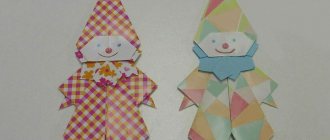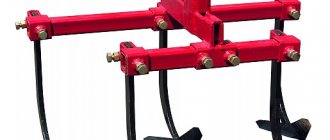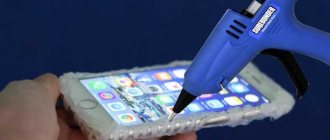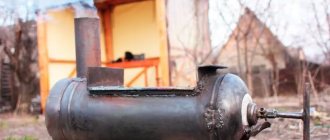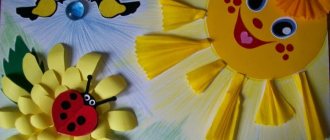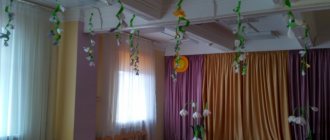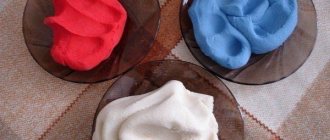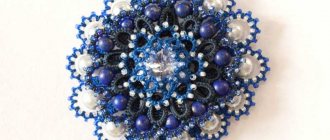Crystal Clean
The ideal white background is a classic photo photon that will work well for 80% of shots. In addition, under the universal background, you can apply any texture you want in a photo and video editor. You can choose from the following materials:
- sheet;
- blanket;
- gauze;
- long pile wool carpet;
- painted plywood;
- laminate;
- inexpensive countertops from IKEA.
If you want to buy a photo backdrop for food photography, then plywood is not the best option. When drops of water fall on it, it absorbs everything well and tends to swell. And this doesn’t look very aesthetically beautiful in the frame.
White laminate of different sizes can be purchased at any hardware store.
Use only the best watercolor paper
When you're applying multiple layers of watercolor paint, you need to choose a good quality paper that can handle it all. Will withstand layering and re-wetting with water without deformation. There's nothing more frustrating when, halfway through your painting, the paper starts to fall apart. My choice fell on Archer No140 cold pressed watercolor paper. Always use at least 140 g/m3.
Draw this picture and start applying the first layer.
Step one
The next series of dogwood flower drawings will clearly show how I drew and planned my background. First, I drew a sketch of the object, drew it in detail and began to paint around it (negative drawing). At first I used Antwerp blue for the background.
Adding yellow to the background.
Step two
Next, add glaze with Aureolin yellow. Each time after applying a coat, allow it to dry completely before applying the next one. It is very important to use a light hand when layering so as not to disturb the previous layers.
Adding red to the background.
Step three
Afterwards, I applied a layer of Quinacridone Pink. Choose primary shades for better blending of tones. Some colors don't mix well with others and can give a messy result.
Let's start adding the blue layer again.
Step four
At this stage, we return to Antwerp blue, but this time we apply it lightly so that it disappears into the background itself. We add elements to the background, they will not seem bright, but on the contrary, the tones will mute the background, making it, at the same time, dark. The dogwood flower comes to the foreground against this background.
We continue to draw, repeating layers of watercolor.
After applying a layer of Antwerp Blue, I again apply Aureolin Yellow around the painted branches and around the foreground. Using this method, slowly build up depth in the background of your painting.
Use only a few background colors.
Step six
At this moment, I realized that I was getting closer to the desired background saturation. Now I started to control my color, adding blue and yellow, eliminating red completely. All this so that I have a predominantly dark green background.
Final touches.
Last step
At the last moment I added some dark branches in the background to add even more depth to the design. Then, I added shadows around the main flower and branches.
There is great symbolism in the dogwood flower. I was inspired to create this painting after hearing the legend about this flower. It says that the petals of the dogwood flower represent the cross of Christ, and the indentations in them are the nails placed in the hands and feet of Christ.
It takes longer to paint the background layer by layer, but the results are definitely worth it.
Plywood
Plywood is a very interesting and lightweight material for a photo backdrop. It is a thin board with a wooden uniform texture. You can buy it at a hardware store.
The plywood itself makes an excellent backdrop for pictures. But if your photos lack some zest, you can treat the sheet with stain to give it a different shade or paint it with paint.
It is important to remember that this photo backdrop does not tolerate much humidity. You should immediately avoid taking pictures using water or splashes.
The price per sheet starts from 200 rubles.
How to make a colorful poster
The work process will be fun and easy if you follow a few rules:
Such a gift can also be an excellent decoration for a holiday room.
Original DIY poster
Panels
In a hardware store, in the wallpaper department, you can find decorative panels for the ceiling made of wood or foam plastic. They can be either absolutely flat or embossed with convex patterns. Their texture is pleasant to the touch and looks great on camera. For the background you will need 4 or 9 squares.
Such a panel serves as an excellent light reflector in product photography.
Price: from 50 rubles.
How to choose a good background for your painting?
Translation of the article, author - Bob Davies
The background is an integral part of the picture, regardless of what is depicted in it.
Even if you decide to leave just a white area around the image, you are still creating a background for it, since the canvas or paper, whether white or tinted, will ultimately also be perceived as part of the finished painting.
Thus, it is very important to choose the right background for the painting, and not just “draw something” in order to finish the work quickly.
In this article, let's try to figure out what an artist should pay attention to when it comes time to think about the background of a painting.
I have prepared and collected the works of teaching artists and their students in order to comment on the choice of background for each of them.
Adhesive tape
Self-adhesive film with various prints and textures, which are also sold in hardware stores, can set the mood for your photographs. If you search well on Aliexpress, you can find self-adhesive paper with the effect of marble, wood, stone and other natural species. It is best to glue the film onto thick MDF paper or hardboard.
Self-adhesive film can be found in Fix Price stores.
Price: from 100 rubles.
Face templates
It is recommended that children be allowed to make an applique on the image of an animal’s head, i.e. the child only has to assemble the face of the animal from suitable parts (cheeks, nose, eyes, eyebrows, mustache, color details, etc.).
The face of the beast is unique for each animal, so in order for the child to clearly understand the difference, it is advisable to give tasks with portrait applique of animals more often.
Older children can be given the task of giving the animal’s face a voluminous, interesting look.
Templates can be prepared for crafts on any topic. This is especially necessary for kindergartens to make the work easier for children. A teacher who has entire sets of templates quickly develops the desire for creativity in his students. Therefore, it is advisable to gradually replenish the collection with a variety of specimens: birds, domestic animals, natural details (clouds, sun, tree, flowers), etc.
Concrete
At first glance, it’s quite difficult to make a complex photo backdrop for a photo. And it’s better to leave it in the hands of knowledgeable people. To create a concrete background you will need cement (or cement-containing products: tile adhesive, grout) and water.
All this needs to be mixed with each other. Apply interior primer to the fiberboard and let it dry. And then, using a spatula, coat the fiberboard or plywood sheet with cement mixture (gypsum plaster). When it's all dry, you'll get the effect of real concrete. Looks pretty good!
White gypsum photon is suitable for cakes, cupcakes and other baked goods.
Price: from 250 rubles.
Easy drawings with paints for beginners in watercolors step by step
The best option is to draw a landscape. For example, this sunset in pink tones.
In order to make such a drawing, in addition to a blank sheet of paper and a brush, you will need to prepare four colors of paint: pink, blue (ultramarine), dark yellow and black.
We start with yellow, mix the paint with water, making the color saturated. After this, we begin to paint the sheet with a brush.
So, the background was applied. Now, as in the final version, you need to draw the sun. In the place where you plan to do it, wipe the area with a dry cloth. Making a white circle. The result should be the following.
Now add pink to the yellow color and mix to get an orange color. We put this new color on top of the yellow, but so that there is a yellow halo around the sun.
Now we take only pink paint and apply it in a third layer so that the sky has a slightly more pink tint.
Applying blue skies
You need to add a little blue color to the upper part of the sky. We apply ultramarine at the top of the picture. If the blue color begins to mix with the previously applied yellow, you can remove the previous shade with a cloth and apply the blue directly. Before each application of paint, the brush must be wiped with a cloth so that it is dry.
Now mix pink and ultramarine. The result will be a violet or purple hue. We apply it below the blue color. Subsequently, this will give the sky a more evening appearance.
Now, using the same pink and blue colors, we make a darker, rich purple shade. Here you will have to experiment with the amount of paint. Before applying the finished shade, apply it to a strip of paper. If you are happy with the color, then paint it; if not, we continue mixing further.
Using the resulting color scheme, we draw stripes of clouds parallel to the horizon.
We will also draw several stripes of clouds on the right side of the picture, where the sun is. So that the clouds are not very contrasting, they need to be blurred a little. To do this, take a dry brush and blur the painted purple clouds with it.
If the previous stages were drawn on wet paper, then subsequent drawings should be done on a dry sheet. Therefore, we wait for some time for the sheet to dry. After it becomes dry, we begin drawing the horizon. Take a light purple color and draw a horizon line with a thin brush tip.
Now the upper part of the drawing, above the horizon line, needs to be made somewhat pinkish. Take the pink color and apply it. To make it softer and more blurry, add a little water and “smear” the pink paint with water.
Then we move to the lower part below the horizon line. We draw the water and the shore. Since we have a sunset, a pink evening, we will paint the water pink.
After the water we move to the shore
To do this, take the intense purple we used to paint earlier and mix it with black paint. We get a dark shade for the shore, which we use to paint under the waves. We also make a few dark strokes for the water itself.
All that remains is to apply a few adjustments in the sky area; if you are not satisfied with it, use a dry brush under the horizon to blur the paint, making it look like glare from the sun on the water. That's the whole drawing. Perhaps something won’t work out right away, but with patience you can get the hang of it, and then everything will go like clockwork.
Kraft paper
The next photon background for a photo is craft paper. Pictures with such a background turn out to be very interesting. The universal background is suitable for absolutely any still life and other things. You can buy paper at any art and construction store or order it online. It is sold in rolls or comes in sheets. You can use it as a flat surface or a slightly rumpled one.
Ideal photo backdrop for manicures, nails or jewelry display.
Price: from 100 rubles.
Adding a background after text - method 1
First, let's look at the method for selecting the background behind the text, without filling the space between the lines.
To add a background, follow these steps:
- Select text in a Word document.
- In MS Word, open the “Home” tab, in the “Font” group, click on the “Text Highlight Color” button.
- Select the color you want.
As a result, the lines with the text will be highlighted, and the space between the lines will remain with the default background.
In a similar way, you can highlight individual words or sentences.
Cardboard
A clear advantage of this material is that cardboard has a huge color palette. It is with the help of it that you can create original and bright photographs.
But among the disadvantages, it is necessary to highlight the fact that this material does not tolerate moisture at all, absorbs everything well and forms various stains on its surface. It deteriorates quite quickly and is enough for a couple of photo shoots.
Price: from 100 rubles.
Fiberboard or fibreboard is an ideal material for a background. You can paint it or glue paper on it. Fiberboard 60*120 cm costs about 80 rubles.
Various techniques for creating backgrounds in fine art
Elena Tynyanaya
Various techniques for creating backgrounds in fine art
The background is the background of the drawing, one of the means of expressiveness. It gives the drawing spatial integrity and completeness. Choosing a background, its color, texture, technique and image tools is a creative process .
In drawings with a felt-tip pen, a pencil background looks very good. It is difficult to evenly paint large spaces with a felt-tip pen and it is too bright for a background). Pencil tinting applies more densely, softly and it gently complements the bright images with a felt-tip pen :
The use of dry pastels for the background adds tenderness to the works:
Ready-made bright backgrounds (for example, colored cardboard)
suitable for contrasting
the image ; such works are laconic:
For the effect of somewhat smoothing out the contrast and making it more natural, you can supplement the finished colored background with additional drawing with a felt-tip pen or gouache (then it is better to choose pastel colors of paper)
:
It is interesting to use ready-made colored backgrounds with a pattern (usually polka dots, stripes, checkered patterns or hearts)
:
In some works (usually with “warm”
natural material, dough, so as not to disturb the natural atmosphere, it is better to use unpainted cardboard:
You can also use other natural material as a background: birch bark, leaves, etc.
Or background pictures from coloring books, damaged books, magazines:
It is also interesting to create a non-uniform background , which in the application is achieved by using different pieces of paper :
Applying backgrounds with oil pastels (wax crayon)
has its own characteristics.
In applique, you can initially tint the paper, as with other isomaterials, and in drawing, the background is applied with wax chalk after all the details of the image , bypassing them (since other chalk and paint do not fit well on wax)
.
This can be done different ways and achieve different effects . The most common (so that the chalk lays down softly)
is with the side of the chalk flat, you can use one color, or you can add other colors. And with the tip of the chalk, using strokes, stripes or circular movements in curls:
backgrounds are primarily used for fabric appliqués, but are also great for collages:
Crumpled paper also looks impressive as a background:
And also a newspaper, sheet music or music book:
Maybe because I really love painting, or maybe because of the subtlety of nuances and breadth of possibilities, I prefer paints. Backgrounds in watercolor are gentle, iridescent, light:
Using the watercolor technique on wax crayon, the background is applied on top of all the details of the image :
a background picture look very beautiful create a light background picture in a raw way
Gouache occupies a larger place in preschool age due to its opacity. And create backgrounds in it in a variety of ways :
In the technique of painting with colored soap foam and spraying:
Drawing with a toothbrush:
With a fan brush and a poke of a cotton swab:
With a sponge, foam swab or roller (a sponge and a swab create a more porous background , the roller is smoother and velvety):
Method of covering a damp background with plastic film:
Drawing underpainting:
And using the monotype technique :
Of course, these are not all the options, but only those that I found in my photo archive. We used both sponge imprinting on lace in gouache and frottage on leaves with colored pencils. (unfortunately we didn’t take any photos)
. But I hope the material was useful to you, dear colleagues. Thank you for your attention!
Fabrics
There are no limits to imagination here. Fabrics can be chosen to suit your taste in various textures and textures, from burlap to tablecloth or from chiffon to organza. You can combine them with completely different objects to achieve the perfect composition.
In addition to fabrics, the following are suitable:
- towels;
- curtains;
- tablecloths;
- scarves;
- chunky knit sweaters;
- silk pillowcases;
- furniture covers.
Price: from 100 rubles per meter.
It looks beautiful if the fabric is slightly wrinkled and gives the background some relief.
Ceramics
Ceramic tiles or porcelain tiles are a very good photo backdrop for photos. If you have several slabs left after repairs, then you can safely use this background for your shots.
If your bathroom has good lighting and beautiful ceramic tiles, then why not? This is the perfect place to take pictures with the relaxing sound of water! As a result, you can get unusual images with amazing effects!
Photos of clothes on such a photo background will look simply amazing!
We draw water lilies on the water step by step with paints on paper
This drawing will appeal not only to children, but also to adults. We will create a picture of water lilies.
We will paint with gouache. And the first thing you need to do is create a background by applying dark blue paint to the entire sheet of paper.
Then we take the green paint and apply it over the blue. But not with a second layer, but blurred in the lower and upper parts of the picture. The brush should be damp.
Similarly, rub white paint into the upper part of the drawing. Using a damp brush, blur it over the main background.
At the next stage you will need to draw the leaves of the water lilies. To do this, mix three colors: white, green and blue, and with the resulting shade we draw ovals, which will later become leaves.
Now mix white with green and yellow. Using this shade we draw contours along the edges of the leaves.
Mix white and dark blue. Similarly, add a few strokes to the leaves.
The final step is to add green on top of each leaf. but a little.
Then we mix blue with brown and outline each leaf with the resulting shade. At the same time, draw stripes on the water with the same color.
Now we mix the blue color with white and make highlights on the water. There are more of them in the lower part of the picture, and in the upper part there are smaller backgrounds.
The leaves are ready, now you need to draw the water lily flowers.
Drawing water lilies
Mix white with pink, add a little blue. Using the resulting shade we draw the petals of the water lily flower. Apply each petal with a separate stroke.
Then along the edge of each petal we make strokes of white to give the flower volume.
These were the petals that are visible from the inner upper side. Now we draw the outer petals. This is the second row. Add more pink to make the shade more saturated. Apply the next group of petals. After we have drawn these petals, we also draw white along their edges.
Add a little white to this color, which was used to paint the second row of petals. With this lighter shade we draw the third row of petals.
Mix pink, white and blue and draw the last row of petals. Add more blue and shade the edges of the petals.
Using the same color under the flower we draw a highlight or its reflection on the water. Then use blue to separate the flower from this highlight.
Draw an unopened bud next to it in light pink. Use brown paint to add a shadow to the leaves and blur it a little with a damp brush.
Using a light shade, add contours to several petals, stripes on the water, where the shadow of the flower is. These were the finishing touches. As a result, we got this wonderful picture.
Metal shield
How to make an imitation of a metal surface at home? There is an exit! A metal shield comes to the rescue. Finding it is much easier than you think.
There is no need to look for it around the area or buy it from local men for a bottle. You can find a sheet of aluminum surface at any hardware store.
Price: from 200 rubles.
Wood
The most popular and loved by many bloggers photo background. There are a huge number of master classes on the Internet on how to make a wooden background for a photo with your own hands.
Everything is quite simple: go to Leroy Merlin or any hardware store. Buy 5-6 boards of the same size, 2 boards to connect them all, and nails. You knock together boards and get a background.
Ask your hardware store for folding boards. They are connected like parquet and do not take up much space in the house. 3-4 pieces are enough to create a background. In this case, nails are not needed.
Why he?
This option is very original. After all, you can get several backgrounds at once. Wood can be painted any shade on one side, and burned or artificially aged on the other. Or paint it and then artificially age it. All these manipulations are very simple, and such a background will never go out of style!
Craquelure varnish can create an antique effect.
Price: 1 board costs 60-100 rubles, 1 narrow (fastening) board costs 110 rubles, nails cost 30 rubles apiece. Total: about 1000 rubles + paint 100-150 rubles.
How to draw a beautiful landscape with paints on paper step by step
In this section I would like to offer a very interesting and simple autumn landscape.
Despite the apparent complexity due to the richness of the colors, it is not difficult to draw.
We start by drawing a blue horizon line in the middle of a sheet of paper. We make it not even, but a little winding.
Then we paint the upper part above the horizon - the sky - in two colors. We make the very top part blue, then paint it lighter below - we take white for this.
Now we go down and draw the water, also using a gradient shade. At the beginning there is a light blue color, and then it gradually turns into a dark blue.
The main background for the picture has been drawn, now let's move on to the details. We start by drawing the clouds. To do this, take the color white and start drawing lambs flying across the sky. It is not at all necessary to draw as shown in this picture. Draw them as best you can.
We have drawn the clouds, now we draw the shores. We take brown paint and also mix light brown with yellow to obtain the desired shade. Using these colors, making brush strokes, we first draw the shore along the horizon, and then at the left edge of the picture.
The shore is ready for planting.
Let's start drawing trees
On the far shore, near the horizon, draw a tree with a brown color, and a slightly lighter color – its reflection in the water.
We draw a few more trees in the same way. To make them more diverse, we make not only trees, but also shrubs. And to make the autumn picture look even more colorful, you can draw several birch trees: we draw the trunks with white, and the spots on the trunk with black.
The trees are drawn, now we need to draw the foliage. We use yellow, red and orange. Using small strokes we make leaf dots on tree branches. We use very bright shades of these colors – it’s autumn after all. But for reflection in the water we make them less bright. Don't try to make the reflection identical to the main drawing. If you don't look closely, you won't see the difference.
